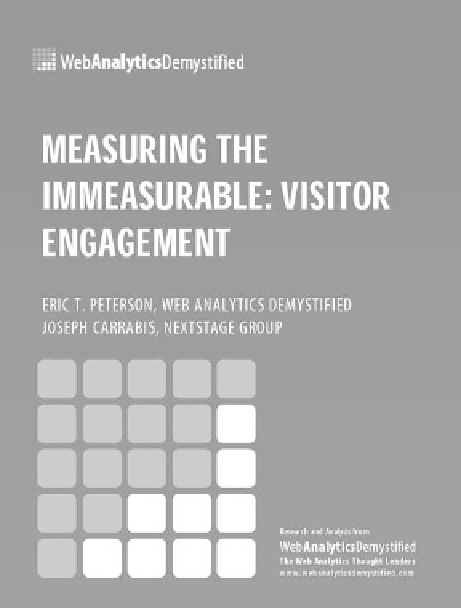Information Technology Reference
In-Depth Information
•
P
age View after First Paid Search Visit
a
•
dvertising revenue Generated after First Paid Search Visit
One caution on using advertising revenue as a simple multiplication of page
views with an overall site cPm: most sites charge very different rates for different
placements. the yahoo! front page cPm and the yahoo! mail cPm, for example, are
far, far apart!
Finally, i suggest you think about optimization as either considerably delayed or
in real time.
if you choose a delayed method, you can use yahoo! Web analytics to do most
of what you want to do. For instance, you can analyze a paid search campaign run in
January 2009 through march 2009, giving you an opportunity to see the return rate
and engagement of those users.
however, if you need real-time optimization, you are forced to generate a proxy
for the return rate and engagement. the validity of an engagement metric is wildly debated
in the industry, and i will let you decide whether that is the route for you to take. i sug-
gest you start by looking at this whitepaper by eric Peterson and Joseph carrabis (see
Figure 11.16):
299
http://www.webanalyticsdemystified.com/sample/Web_Analytics_Demystified_and_
NextStage_Global_-_Measuring_the_Immeasurable_-_Visitor_Engagement.pdf
Figure 11.16
Visit this site for a
whitepaper on Visitor Engagement.
















